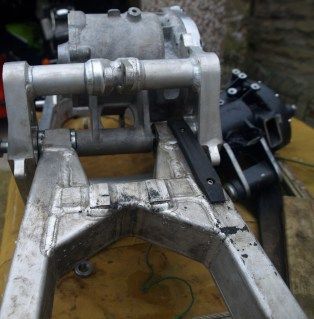Classic exhaust headers
-
Ageing Rotarian
- moderator
- Posts: 87
- Joined: Fri Sep 19, 2014 9:43 pm
Classic exhaust headers
Sorry for the duplication put have already posted this in the wrong category. Just aquired replacement headers for my air cooled rotary and the flanges and gaskets are thicker, will this affect the location of the exhaust liners?ThanksRoy
- Richard Negus
- moderator
- Posts: 1060
- Joined: Mon Jun 18, 2007 5:11 pm
- Location: Wilds of Lincolnshire
Re: Classic exhaust headers
Roy,Thick flanges are a good thing - they take longer to rust away!The important dimension is the depth of the recess in the flange, into which the port liner fits.If this is pretty much as your original manifold, it will be ok.How thick are the gaskets?R.
Just a bike-less old fogey now. Boo-hoo!
-
Ageing Rotarian
- moderator
- Posts: 87
- Joined: Fri Sep 19, 2014 9:43 pm
Re: Classic exhaust headers
Hi Richard sorry for the late responses and I think I have been worrying over nothing.I have the manifolds fitted onto the bike so can't check the recess depth but the gaskets have compressed to a thickness of 3mm or 1/8 ish (started at 4mm plus) so maybe things are Not as bad as I thought. The gaskets that came off were no more than 2mm and although were in reasonable condition, were a lot more rigid (the recon headers and gaskets came from Andover Norton).Have you seen any issues with the liners becoming displaced and if so what were the consequences?All the best Roy
- Richard Negus
- moderator
- Posts: 1060
- Joined: Mon Jun 18, 2007 5:11 pm
- Location: Wilds of Lincolnshire
Re: Classic exhaust headers
Roy,Norton's original gaskets were made from an asbestos material with a woven wire mesh insert made by Klinger and called, I think, Klingerit 1000. These gaskets were, as you say, rigid and became brittle during use. Asbestos is now a no-no and current gaskets are made from a hazard-free material which is initially a little thicker but compresses down to the specified thickness.The port liner is often a tight fit in the machined diameter of the rotor housing and, in all the engines I've built, has always protruded from the gasket by at least a millimetre, sufficient to engage in the recess in the manifold.I haven't seen an engine where the liner wasn't located at both ends. I guess if a liner was shorter than specified by more than five mm, then exhaust gases could directly contact the gasket, burn it, and allow very hot gases to escape across the joint face. That would almost certainly melt the aluminium casting.The prototype F1 exhaust system, made for Norton by Micron, had an aluminium box (like a finned sump) under the engine with flanged connections to the silencers, held together by two bolts at 3 and 6 o'clock and a thin gasket. Suspension testing with White Power at Nurburgring, the joint flexed over the bumps, the gasket leaked and hot gas melted the box and then softened the frame. If the bolts had been at 6 and 12 o'clock, then the joint wouldn't have flexed and production F1's would have probably had that 'sump'. Look at photos of the Show bike to see the aluminium box.
Just a bike-less old fogey now. Boo-hoo!
Re: Classic exhaust headers
Hi Richard
 And that's the prototype F1 frame that had the lower tube replaced at SpondonRegards Wayne
And that's the prototype F1 frame that had the lower tube replaced at SpondonRegards Wayne

 And that's the prototype F1 frame that had the lower tube replaced at SpondonRegards Wayne
And that's the prototype F1 frame that had the lower tube replaced at SpondonRegards Wayne